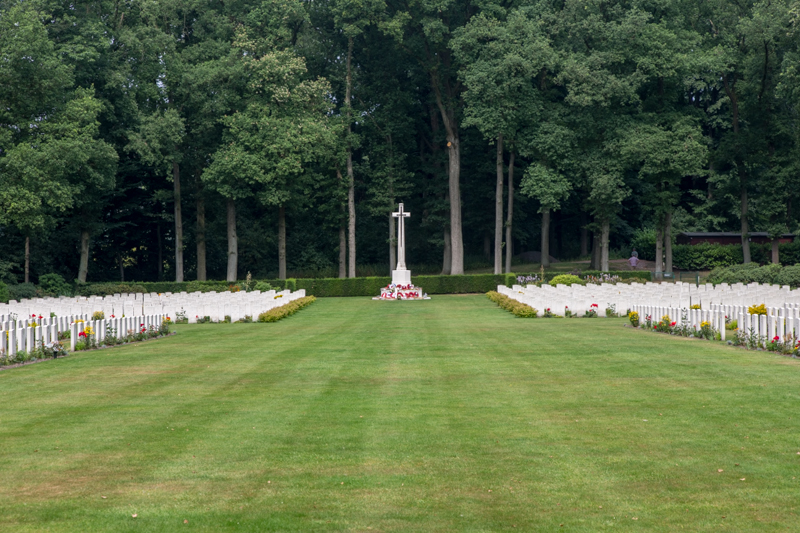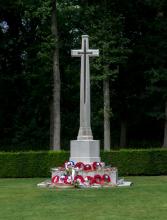Gelderland
Arnhem is in the eastern Netherlands. Oosterbeek lies 7 kilometres west of Arnhem on the road to Wageningen.
From the Utrechtseweg, turn on to the Stationsweg heading for Oosterbeek Station. At the railway station, turn right on to Van Limburg Stirumweg. The entrance to the cemetery is a short distance along this road opposite the town cemetery.
Following the Normandy landings of June 1944, the Allied advance through northern Europe was extraordinarily rapid and on 11 September 1944, the Second Army entered the Netherlands just south of Eindhoven, the first Allied troops to set foot in the country since its fall in May 1940.
Their next aim was to cross the Rhine before the Germans had time to reorganise after their recent setbacks, securing crossings over the rivers and canals that stood in their path at Grave, Nijmegen and Arnhem. 'Operation Market Garden' would involve the United States 82nd and 101st Airborne Divisions, the Commonwealth 1st Airborne Division and the Polish Parachute Brigade.
On 17 September 1944, the 1st Airborne Division began landing west of Arnhem, but German resistance, bad weather and problems with supplies and reinforcements led to heavy losses, and their objectives were not taken. They were forced to form a perimeter at Oosterbeek which they held stubbornly until 25 September, when it was decided to withdraw the remnants of the division across the lower Rhine.
Arnhem Oosterbeek War Cemetery contains the graves of most of those killed during the September landings, and many of those killed in later fighting in the area.
There are now 1,679 Commonwealth servicemen of the Second World War buried or commemorated in the cemetery. 246 of the burials are unidentified and two casualties are commemorated by special memorials. There are also 73 Polish burials and eight Dutch graves. The three non-war graves in the cemetery were Commission employees.



Add new comment